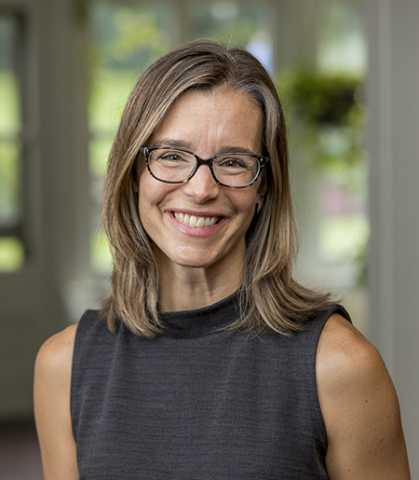
This upper-level undergraduate seminar focused on the field of Native American/Indigenous studies as both a body of critical theory and a form of cultural critique. Interdisciplinary in nature, the seminar examined the theories and major questions in the field, with a deliberate departure from a typical area-studies approach. Major emphasis was put on settlement and resistance in North America, but also in Australia, New Zealand, and Oceania.
One component of the seminar involved the examination of the Native American genocide and its consequences, especially from the perspectives of Native American/Indigenous scholars. In particular, the course explored the relationship between settler colonialism and genocide, approaching settler colonialism as both a theoretical concept and a lived experience.
“The Visual History Archive testimonies helped students to think critically and comparatively…”
For the component of the class dedicated to genocide and settler colonialism, students were assigned research projects in the Visual History Archive (VHA), with the goal of giving them research experience with comparative genocide studies methods. Considering the absence of recorded survivor stories about the Native American genocide, the VHA testimonies helped students to think critically and comparatively about and amidst the lack of such sources.
For their VHA projects, students worked in groups of three. All groups were required to spend approximately 25 hours working in the archive, and could choose between any of the genocidal events represented in the archive. Some groups chose to focus on more than one genocide.
Once they chose collections of testimonies to work with, students identified the common themes in testimonies (both those emerging from survivors' stories and the theoretical themes of the class, including memory, violence, dispossession, and resistance), and considered the effects of visual media on their understanding of genocide and violence.
Following their in-depth research in the archive, students created a preliminary research design as if they were able to interview a Native American genocide survivor, with their methodology influenced by the interview methods developed by the USC Shoah Foundation. For example, students designed their own pre-interview questionnaire. They wrote their open-ended questions and imagined any clarifying questions they might ask. In addition, the students were asked to think about what types of artifacts, objects, and images they would ask survivors to show, and to consider what other materials they would consult to enhance their projects.
“This class as well as the VHA project have brought up many deeper philosophical questions for us that drive us to challenge the way our systems are run and, the ways we seek to learn more about the trauma of others.”
As part of their research projects, the students reflected on and wrote about the impact of the VHA testimonies on their understandings of settler colonialism and Native American/Indigenous studies, as well as on any questions their research raised for them. Finally, they were asked about the way the Visual History Archive can contribute to the thinking, cultivation, and enactment of new modes of decolonized research.
“…the whole experience of interacting with the VHA feels like resistance to each genocidal project - these people all survived and we get to hear their stories and their children’s stories and their children’s children’s stories and so on. The VHA and its archived stories is resistance to the violence of erasure, denial, and dismissal.”
While conducting the assignment, some students experienced difficulties watching the testimonies. The class handled this by always listening to the testimonies in groups and limiting the time spent in the archive. At the end of the semester, the students' work in the archive proved to be an extraordinary bonding experience, and much more; several of the students reflected on learning a great deal about the everyday life and historical circumstances across times and locations. According to one of the students, having the opportunity to work with a primary source was of a tremendous educational benefit, which enhanced class lectures and assigned scholarly readings.
“It was good to have a primary source, rather than just have to rely on the textbook. It was a lot more educational, and I was able to stay focused.”
____________________________________________________________________________________
If you are interested in incorporating the Visual History Archive into your course and want to discuss ideas for doing so, please feel free to consult with our staff by email at [email protected].